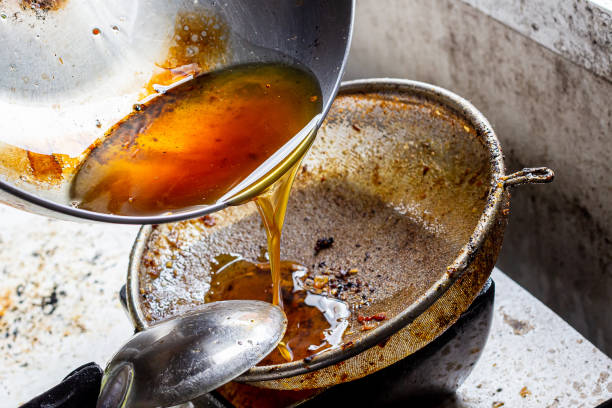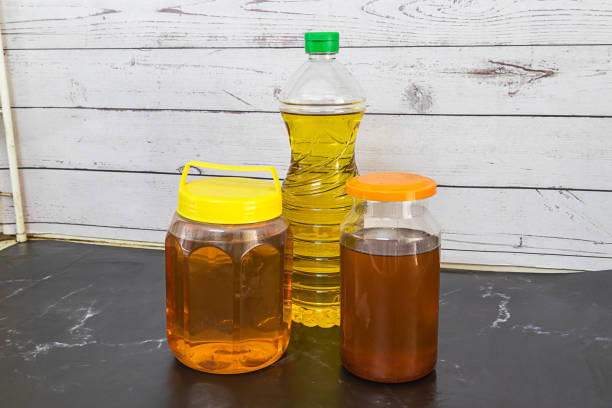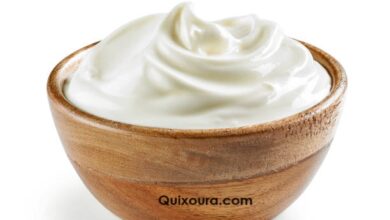
cooking oil and health
Cooking is an art, and like any art, it requires not just skill but also an awareness of the materials used. One such material that demands our attention is cooking oil, a staple in kitchens worldwide. While reusing oil might seem economical and practical, the implications it has on health cannot be overlooked. Repeatedly reheated cooking oil has been associated with serious health risks, including heart disease and cancer. Let’s delve into the details.

Understanding the Chemistry of Reheating Oil
Cooking oils are complex mixtures, primarily composed of triglycerides, which are molecules made up of a glycerol backbone attached to three fatty acid chains. When these oils are subjected to heat, particularly during the process of reheating, several chemical reactions occur, altering the oil’s composition and properties. This section delves into the key chemical changes that happen when cooking oil is reheated, shedding light on the implications of these changes for health and food quality.
Breakdown of Triglycerides
- Hydrolysis: When cooking oil is reheated, the triglycerides can undergo hydrolysis, breaking down into free fatty acids and glycerol. This reaction is accelerated by the presence of water, which can come from the food being cooked. The increase in free fatty acids is one reason reheated oil can taste rancid.
- Oxidation: Reheating oil promotes the oxidation of fatty acids, leading to the formation of various oxidative products, including aldehydes, ketones, and carboxylic acids. These compounds can impact the oil’s flavor and nutritional quality and have been linked to adverse health effects.
- Polymerization: High temperatures can cause fatty acid chains to react with each other, forming larger molecules through a process known as polymerization. This reaction can lead to an increase in the oil’s viscosity and the formation of compounds that are difficult for the body to process.
Formation of Harmful Compounds
- Acrolein: One of the aldehydes that can form during the reheating of oil is acrolein, a compound known for its potent irritant properties and potential to contribute to cardiovascular disease. Acrolein formation is particularly noted when glycerol breaks down at high temperatures.
- Trans Fats: Repeated heating of oil can lead to the isomerization of unsaturated fats, converting some cis fatty acids into trans fatty acids. Trans fats are associated with an increased risk of heart disease, as they can raise LDL (bad) cholesterol levels and lower HDL (good) cholesterol levels.
- Altered Nutritional Profile: The heat-induced chemical reactions can diminish the nutritional value of the oil by breaking down beneficial compounds, such as antioxidants and essential fatty acids, thereby reducing the oil’s health benefits.
cooking oil with highest smoke point Considerations
- Smoke Point: The smoke point of an oil is the temperature at which it starts to smoke and break down. Different oils have different smoke points, which can be lowered by repeated use. When oil reaches its smoke point, it not only produces unpleasant flavors and odors but also generates harmful compounds.
- Choosing Oils: Selecting oils with a high smoke point for cooking and avoiding reheating can help minimize the formation of harmful compounds. Oils with high smoke points, such as avocado or peanut oil, are more resistant to the detrimental effects of high temperatures.

The Formation of Harmful Compounds
Reheating cooking oil can initiate several chemical reactions, leading to the formation of various harmful compounds. These substances can have detrimental effects on health, contributing to chronic conditions such as heart disease and cancer. This discussion focuses on the key harmful compounds that form when cooking oil is reheated and the processes that lead to their creation.
Acrolein
Acrolein is a volatile and highly reactive aldehyde that forms predominantly when glycerol, a component of triglycerides, breaks down at high temperatures. It is known for its pungent odor and is a significant irritant to the mucous membranes. In the context of heart disease, acrolein is particularly concerning as it can promote atherosclerosis by activating inflammatory pathways and damaging vascular cells.
Trans Fats
Reheating oil, especially beyond its smoke point, can catalyze the isomerization of unsaturated fats, converting some cis fatty acids into trans fatty acids. Trans fats are notorious for their role in cardiovascular disease; they increase LDL (bad cholesterol) and decrease HDL (good cholesterol), contributing to the buildup of arterial plaque.
Polycyclic Aromatic Hydrocarbons (PAHs)
When oil is overheated, it can lead to the formation of PAHs, particularly if food particles are present and get charred. PAHs are a group of chemicals that are formed during the incomplete burning of organic substances. Some PAHs are known carcinogens and can embed themselves in the food being cooked, posing long-term health risks when ingested regularly.
Aldehydes
Apart from acrolein, other aldehydes such as formaldehyde, malondialdehyde, and 4-hydroxynonenal can form when oil is repeatedly heated. These compounds are concerning due to their potential to cause oxidative stress and cellular damage, contributing to inflammation and chronic disease development, including cancer.
Free Radicals
Reheated oil can become a source of free radicals, unstable atoms that can cause extensive damage to cells and DNA, leading to inflammation and increasing the risk of chronic diseases, including cancer. The presence of free radicals is a direct consequence of the oxidative degradation of fats.
Mitigating Exposure
To reduce exposure to these harmful compounds, it is advisable to avoid reheating oil whenever possible. If you must reuse oil, it should be done cautiously, ensuring the oil does not reach its smoke point and is not used repeatedly. Opting for oils with higher smoke points and storing oil properly to prevent oxidation can also help minimize the formation of these harmful substances.
The Link Between Reheated Oil and Heart Disease
Reusing and reheating cooking oil is a common practice in many kitchens, but this habit may have unintended consequences for cardiovascular health. When cooking oil is reheated, it undergoes chemical changes that can lead to the formation of substances detrimental to heart health. Understanding this link can help in making more informed decisions about cooking practices to support cardiovascular well-being.
Formation of Trans Fats
One of the most significant concerns with reheating oil is the formation of trans fats. When unsaturated fats are repeatedly exposed to high heat, they can undergo a structural change, converting from a cis to a trans configuration. Trans fats are well-known for their negative impact on heart health, as they can increase levels of low-density lipoprotein (LDL) cholesterol, or “bad” cholesterol, and decrease high-density lipoprotein (HDL) cholesterol, or “good” cholesterol. This imbalance contributes to the buildup of arterial plaque, a key factor in the development of atherosclerosis.

Production of Acrolein and Other Aldehydes
Acrolein, a compound that can form when glycerol in cooking oil breaks down at high temperatures, is another concern. This substance is not only a potent irritant but also has been linked to cardiovascular problems. It can induce inflammation in vascular cells and contribute to the development of atherosclerosis. Other aldehydes produced during the reheating process can also contribute to oxidative stress and inflammation, further exacerbating the risk of heart disease.
Increased Oxidative Stress
Reheated oil can contribute to oxidative stress in the body. When oils are overheated, they can generate free radicals—unstable molecules that can cause oxidative damage to cells and tissues, including those in the cardiovascular system. This oxidative stress is a key player in the development of heart disease, as it can lead to inflammation, damage to blood vessels, and an increased risk of plaque formation.
Dietary Recommendations
To mitigate the risks associated with reheated oil, it’s advisable to:
- Avoid reusing oil for cooking, especially if it has already reached its smoke point or shows signs of degradation.
- Opt for cooking oils with high smoke points and use cooking methods that require lower temperatures when possible.
- Incorporate antioxidant-rich foods into the diet, which can help combat oxidative stress.
- Monitor the consumption of deep-fried and processed foods, which might contain reheated oils or trans fats.
Reheated Oil and Cancer Risk
The practice of reheating cooking oil, common in both home and commercial kitchens, has raised concerns among health experts due to its potential link to cancer. When cooking oils are reheated, they undergo complex chemical changes, leading to the formation of compounds that could contribute to the development of cancer. Understanding these risks is crucial for making informed dietary choices and mitigating potential health hazards.
Formation of Carcinogenic Compounds
- Polycyclic Aromatic Hydrocarbons (PAHs): When oil is overheated, it can lead to the formation of PAHs, especially if there are food particles present that get charred. PAHs are known carcinogens, found in the smoke from burning oil and charred foods, and have been linked to various types of cancer, including stomach and colorectal cancer.
- Aldehydes: High-temperature cooking and reheating oil can produce various aldehydes, such as acrolein and formaldehyde, which are considered potential carcinogens. These compounds can cause DNA damage, which is a precursor to cancer development.
- Acrylamide: Acrylamide can form in certain foods during high-temperature cooking processes, including frying, baking, and roasting. While not directly related to reheated oil, the cooking environment that involves reused oil may facilitate the formation of acrylamide, especially in starchy foods.
Mechanisms of Action
- DNA Damage: Some of the compounds formed in reheated oil can lead to mutations by causing DNA damage, either directly or through the production of reactive oxygen species (free radicals).
- Chronic Inflammation: Continuous consumption of foods cooked in reheated oil can lead to chronic inflammation, a known risk factor for cancer. Inflammatory pathways can promote tumor growth and provide a conducive environment for cancerous cells to proliferate.
- Cellular Stress: The toxic compounds from reheated oil can induce cellular stress, leading to changes in cell regulation and apoptosis (cell death), which can be a precursor to cancer if dysregulated.
Reducing Risks
- Limit Reuse of Oils: Avoiding the reuse of cooking oils can significantly reduce the exposure to the harmful compounds that form upon reheating.
- Choose the Right Oils: Using oils with high smoke points and low polyunsaturated fat content can reduce the formation of harmful compounds.
- Dietary Antioxidants: Consuming a diet rich in antioxidants can help combat oxidative stress and potentially mitigate some of the damages caused by harmful compounds in reheated oil.
- Proper Cooking Techniques: Employ cooking methods that require lower temperatures, such as steaming or poaching, to minimize the formation of carcinogenic compounds.
The Role of Free Radicals
free radicals are unstable molecules that play a dual role in our bodies. They are essential in various physiological processes but can also contribute to damage when their levels become excessive. Understanding the nature of free radicals, and their sources. And their impact on health is crucial for developing strategies to manage their levels and mitigate their harmful effects.
What Are Free Radicals?
Free radicals are molecules with unpaired electrons, making them highly reactive. They seek stability by either donating or accepting electrons from other molecules, a process that can cause cellular damage. This reactivity is central to their role in both normal body functions and in the pathogenesis of various diseases.
Sources of Free Radicals
- Endogenous Sources: The body naturally produces free radicals as byproducts of cellular metabolism. Mitochondria, the energy-producing organelles in cells, are a primary source of free radicals during the process of oxidative phosphorylation.
- Exogenous Sources: External factors like pollution, radiation, cigarette smoke, and pesticides can introduce free radicals into the body. Dietary factors, such as the consumption of foods cooked in reheated oil, can also contribute to the body’s free radical burden.
Physiological Roles of Free Radicals
Free radicals are not inherently harmful and play essential roles in various physiological processes, including:
- Immune Response: White blood cells use free radicals to attack and destroy pathogens, playing a critical role in the body’s defense mechanism.
- Cell Signaling: Free radicals can act as signaling molecules, influencing the process of cell growth, differentiation, and apoptosis.
free radicals oxidative stress
When the balance between free radicals and antioxidants is disturbed, leading to an excess of free radicals, oxidative stress occurs. This condition can cause cellular damage, including harm to lipids. And proteins.nd DNA, contributing to the development of various diseases, such as:
- Cardiovascular Diseases: Oxidative stress can lead to the oxidation of LDL cholesterol, a key event in the development of atherosclerosis.
- Cancer: DNA damage caused by free radicals can lead to mutations and genomic instability, contributing to cancer development.
- Neurodegenerative Diseases: Diseases like Alzheimer’s and Parkinson’s are associated with oxidative damage in neural tissues.
- Aging: Accumulation of oxidative damage over time is thought to contribute to the aging process.
Managing Free Radical Levels
- free radicals antioxidants: Consuming a diet rich in antioxidants can help neutralize free radicals. Antioxidants donate electrons to free radicals without destabilizing themselves, thereby stopping the chain of oxidative reactions.
- Healthy Lifestyle: Avoiding exogenous sources of free radicals, such as tobacco smoke and pollution, can reduce oxidative stress.
- Regular Exercise: While intense exercise can increase free radical production, regular moderate exercise enhances the body’s antioxidant defenses.
Choosing the Right Oil
Not all oils are created equal when it comes to reheating. Oils with high smoke points, like avocado or peanut oil, are more stable under heat and less prone to forming harmful compounds. On the other hand, oils with low smoke points, such as olive oil, are more susceptible to degradation when reheated.

Practical Tips for Safe Cooking
Ensuring the safety and nutritional quality of the food we consume is paramount. Cooking practices can significantly influence the formation of harmful compounds and the overall healthiness of meals. Here are practical tips to enhance the safety and nutritional value of your cooking. Minimizing the risks associated with harmful compound formation:
1. Minimize Oil Reuse
- Avoid reusing oil multiple times. Reheating oil can lead to the formation of harmful compounds like trans fats and acrolein.
- If you must reuse oil, do so sparingly, ensuring it hasn’t reached its smoke point and isn’t visibly degraded.
2. Choose the Right Cooking Oil
- Select oils with high smoke points for frying and high-temperature cooking. Examples include avocado oil, peanut oil, and canola oil.
- Understand the cooking process and choose your oil accordingly. For instance, olive oil is great for sautéing but not ideal for high-temperature deep frying.
3. Control Cooking Temperatures
- Use cooking methods that require less oil and lower temperatures, such as steaming, poaching, or baking.
- Invest in a kitchen thermometer to monitor oil and food temperatures accurately.
4. Incorporate Antioxidant-Rich Foods
- Consume fruits, vegetables, nuts, and seeds rich in antioxidants to combat oxidative stress.
- Use herbs and spices like turmeric, ginger, and rosemary, which are known for their antioxidant properties.
5. Avoid Charring Your Food
- Prevent charring when grilling or frying, as this can lead to the formation of harmful compounds like PAHs.
- If food gets burnt, it’s better to discard the charred portions.
6. Proper Storage of Oils
- Store oils in a cool, dark place to prevent oxidation. Exposure to light, heat, and air can degrade oil quality over time.
- Use airtight containers to prolong the shelf life of oils.
7. Use Cooking Techniques That Retain Nutrients
- Opt for cooking methods that preserve the nutritional content of food, such as steaming or blanching.
- Avoid overcooking vegetables to prevent the loss of water-soluble vitamins.
8. Maintain Kitchen Hygiene
- Regularly clean cooking surfaces and utensils to avoid cross-contamination.
- Be mindful of food safety practices, such as proper thawing and cooking meats to the recommended temperatures.
9. Be Mindful of Food Combinations
- Some food combinations can enhance the absorption of nutrients, like pairing vitamin C-rich foods with iron-rich plant sources.
- Be aware of food interactions that might inhibit nutrient absorption. Like excessive consumption of tea or coffee with meals, which can reduce iron absorption.
Conclusion
While the convenience of reusing oil in cooking is undeniable, the potential health risks, especially concerning cancer, warrant caution. The link between reheated oil and cancer emphasizes the need for careful cooking practices. And awareness about the chemical changes that occur in cooking oils at high temperatures. By adopting safer cooking habits and making informed choices about oil usage. Individuals can reduce their risk of exposure to carcinogenic compounds. And contribute to their overall health and well-being.






You’re welcome! I appreciate your willingness to engage further. If you have any specific questions or topics you’d like to delve into, feel free to share them. Whether it’s about recent developments in technology, intriguing scientific discoveries, captivating literature, or anything else on your mind, I’m here to provide insights and assistance. Simply let me know how I can help, and I’ll be happy to assist you further!
You’re welcome! I appreciate your willingness to engage further. If you have any specific questions or topics you’d like to delve into, feel free to share them. Whether it’s about recent developments in technology, intriguing scientific discoveries, captivating literature, or anything else on your mind, I’m here to provide insights and assistance. Simply let me know how I can help, and I’ll be happy to assist you further!